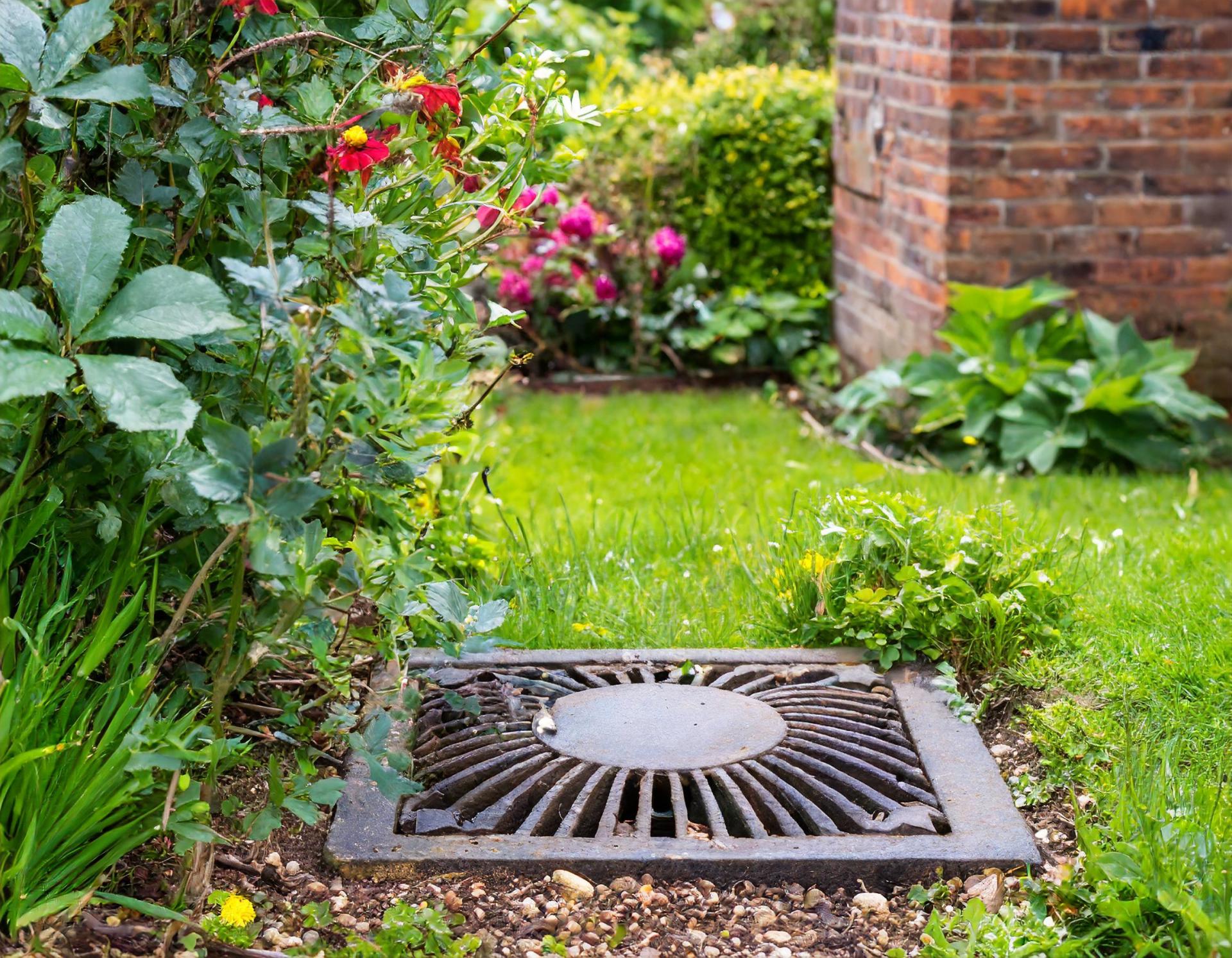
When it comes to drain covers, also known as manhole covers, there's a difference between covering one on your property versus covering one on public streets.

If you're doing some home improvement in your garden, you might encounter a drain cover where you plan to repave your driveway or install decking. So, what does property law say about covering manhole covers?
In this article, we'll explain the UK laws around covering a drain cover and the consequences of covering a drain without the right to do so.
What is a drain cover?
A drain cover typically has holes to let water drain into the sewer while keeping larger objects out.
On the other hand, a manhole cover is a solid, removable lid that sits over the opening of a manhole, often found on urban streets, providing access for maintenance workers to underground utilities.
Depending on the situation, you might have either a drain cover or a manhole cover on your property.
What is the purpose of a drain cover?
Before delving into the legal regulations surrounding drain covers, it's helpful to grasp their purpose.
Drain covers, including manhole covers, serve to protect underground drainage systems. They function as inspection points, letting maintenance workers assess the system's functionality.
By blocking unwanted debris, they prevent blockages that could result in flooding. Additionally, drain covers serve as safety measures, preventing accidents such as slips and falls into the drainage system, which could cause severe injuries.
Drain covers and UK law
Under UK law, the legality of covering a drainage system depends on various factors such as its location, type, and the purpose of covering.
Temporary covering of a drain, often necessary during construction or maintenance, typically doesn't violate the law if properly marked and secured.
For the permanent covering of a drain cover, you'll likely need permission from the local authority, usually obtained through a build-over agreement to make sure that inspection and maintenance access aren't compromised.
Safety is paramount. If covering a manhole creates safety risks, warning signs should be put up to alert pedestrians and road users.
Planning permission may be necessary for significant alterations to drain coverings. Consulting local authorities can clarify this requirement.
Relevant legislation includes the Health and Safety at Work Act 1974, emphasizing safety for employees and the public, and the Highways Act 1980, which mandates safe and unobstructed public roads and pavements, including access to drain covers.
What are the potential risks of covering a drain?
Covering a drain can lead to damage in the drainage system, causing reduced water flow, waterlogging, and flooding, which can extend to other areas. This breakdown can damage property, leading to costly repairs.
Blocked drains can also cause sewage buildup, resulting in unpleasant odors and potential expenses. Additionally, obscured or damaged drains increase the risk of slip, trip, and fall accidents, so it's important to mark the location of covered drains or set up temporary fencing for safety.
What are the penalties for building over a drain cover?
Blocking drain covers can result in legal consequences, including fines if it leads to damage to the drainage system or poses risks to public safety. You could also be held responsible for any resulting costs or injuries.
While temporary coverings are usually permissible, permanently covering drains without approval from local authorities can lead to legal issues. If you're planning significant changes, seek permission from authorities and prioritise safety. When in doubt, consult with local authorities or legal experts.
Can I paint or decorate a drain cover?
Homeowners often want their homes and gardens to look their best, but a drainage cover can sometimes spoil the aesthetic. If the cover is in your garden, you have options, but permanently covering it without permission isn't advised.
You might be able to paint or decorate it to blend in better but always check with local authorities first to ensure access isn't compromised.
Remember, water companies need access for maintenance, so if you're planning any home improvements near a public sewer, consider getting a build-over agreement to avoid issues down the line. Water companies have the authority to remove any structures blocking drain covers.
What should I do if a drain cover is damaged?
If you discover a blocked or damaged drain cover on your property, the best course of action is to report it to your local water authority or a professional drainage company.
Who is responsible for drain covers?
If you notice a damaged manhole cover on the street, your best course of action is to contact the local council, as they are responsible for maintenance and repairs.
However, when it comes to maintaining a drainage cover on your private property, the responsibility typically falls on you.
What are the rules for drain covers on commercial properties?
Drain covers are often overlooked in urban settings, but as a business owner, you may need to consider them. Under the Health and Safety at Work Act 1974, businesses have a responsibility to ensure the safety of their employees and the public.
Negligence leading to accidents could result in fines and potential personal injury claims.
Need advice relating to a drain cover on your property?
If you're facing a dispute with your neighbor regarding drains on your property or water draining onto your property, our team of property lawyers can provide quick and affordable advice on the best course of action.
Contact us today for a free case evaluation from our expert Legal Assessment Team.